FOXG1's Nasha Fitter to Speak at The White House Rare Disease Forum for Rare Disease Day 2024
FOXG1 Research Foundation’s Nasha Fitter is a featured speaker at the White House Rare Disease Forum hosted by the The White House Office of Science and Technology Policy. the White House Office of Science and Technology Policy will host a forum marking Rare Disease Day and highlighting the Biden-Harris Administration’s commitment to supporting patients and families facing a rare disease and delivering progress against the nearly 10,000 known rare diseases that impact up to 30 million Americans. Nasha Fitter will be speaking about the issues with rare disease drug development and share her personal story about her daughter with FOXG1 syndrome.
Seizure Action Plan: World Epilepsy Day
February 12th is World Epilepsy Day, and epilepsy is one of the most debilitating characteristics of FOXG1 syndrome. According to the FOXG1 syndrome patient registry study, more than 61% of FOXG1 patients suffer with seizures.
We want to share this wonderful resource from The Epilepsy Foundation. More.
2023 Impact Report
2023 marked six years of the FOXG1 Research Foundation. We are a parent-driven, global foundation with the mission to help improve the lives of every person affected by FOXG1 syndrome worldwide. We are known in the industry as innovators as we focus on three equally critical areas: FOXG1 science, FOXG1 patient data, and FOXG1 patients and community. From advancing our gene therapy program to building our own bioinformatics platform, to helping guide parents through the rare disease medical caregiver journey, this year has been a year of upward progress in all three areas. Here are the FOXG1 Research Foundation highlights from 2023 and goals for 2024.
CareTalk Podcast: Why Rare Disease Research is SO Important
In the CareTalk episode, “Why Rare Disease Research is So Important” Co-host, David Williams is joined by Nasha Fitter, CEO of FOXG1 Research Foundation, which is dedicated to finding a cure for FOXG1 Syndrome and Vice President of RWE and Ciitizen Platform at Invitae, to shed light on the importance of rare disease research, the challenges it faces, and the promising developments in this field.
San Francisco Business Times: Unlikely Drug Hunters: How two mothers are finding hope in searching for their children’s cures
SF Business Times: Kimberly Nye and Nasha Fitter both founded organizations to seek cures for afflictions suffered by their children. Nasha Fitter didn’t have time. There had to be a better, faster way, she thought — not just for her daughter, but for other people with rare diseases. Fitter tapped her tech and entrepreneurial background to create a nonprofit, the FOXG1 Research Foundation.
ONCE UPON A GENE - EPISODE 163 - How Far We've Come - with Nicole Johnson
Effie Parks talks to the co-founder of the FOXG1 Research Foundation, Nicole Johnson in this episode of Once Upon a Gene. Nicole shares the FOXG1 Research Foundation journey marking five years, and shares tips on how to throw a successful conference for scientists, clinicians and parents from all over the world
The most personalized medicine: Studying your own child’s rare condition
Article from Spectrum News, the leading site for autism research news. Excerpt:Attracting parents who are also scientists to the cause only turbocharges those efforts. Nasha Fitter, a cofounder of the FOXG1 Research Foundation, a parent-led foundation for research on an autism-linked condition called FOXG1syndrome, could hardly believe it when she stumbled on a 2017 Facebook post by FOXG1 parent Soo-Kyung Lee about a grant she and her husband, Jae Lee, both respected neuroscientists, had secured. “Hold up, you guys are parents and you’re scientists?” she remembers thinking, even before she knew of their expertise and reputation for rigor. The Lees now lead the FOXG1 Center of Excellence at the University at Buffalo in New York State and receive considerable funding from the foundation. FOXG1 families are unfortunate in many ways, Fitter says, “but we’re very fortunate with Soo and Jae.”
Global Genes Rare Leader: FOXG1 Research Foundation Co-Founder & Executive Director
Global Genes features FOXG1 Research Foundation Co-founder and Executive Director, Nicole Johnson as a rare Leader. Learn about the FOXG1 organization’s strategy, mission, guiding principles, Nicole’s management philosophy, and more.
Rarebase launches a neuroscience drug discovery platform collaborating with 15 rare disease patient organization
Rarebase launches a neuroscience drug discovery platform collaborating with 15 rare disease patient organizations including the FOGX1 Research Foundation, SynGAP Research Fund, , STXBP1 Research Foundation, Hereditary Neuropathy Foundation, and more. The Function platform enables drug and target discovery for rare genetic diseases.
Global Genes Podcast: Empowering Rare Disease patients With Their Own Health Recods
Global Gene’s RareCast Podcast interviews our CEO and Co-founder about our innovative Ciitizen Natural History Study and how health records empower parents and caregivers to make sure researchers really understand our children’s condition.
Introducing - FOXG1 Research Foundation Australia!
We are thrilled to announce the first official FOXG1 Research Foundation affiliate chapter in Australia, led by Steve Hille. Steve and his incredible team will lead all efforts in Australia to help support the research towards a cure for FOXG1 syndrome.



